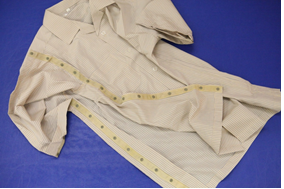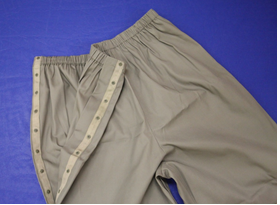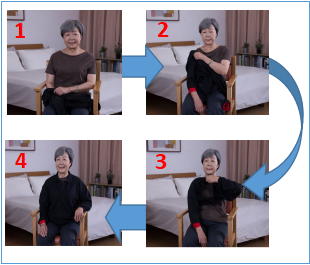Management of Spasticity and Contracture in Elderly (II) – Occupational Therapy
Occupational Therapy management for spasticity and contracture:
Spasticity and contracture not only directly affects the self-care abilities of the elderly but also pose challenges to their carers. If their carers fail to provide relevant caring skills and precautions measures, they could get both the carers and the elderly injured.
Occupational therapists will apply the following techniques and use of assistive devices when providing training to carers. This can enhance the elderly’s self-care ability and alleviate stress and challenges faced by their carers.
1. Use of static and dynamic splintage
 |
| (Diagram 1) A static splint |
Function and Purpose:
- A static and dynamic splintage helps to increase the flexibility, length of muscles and soft tissue; and keep the joint in functional positions. A static and dynamic splintage applies the two mechanical principles: "continuous" and "external traction".
- Through appropriate design, fitting and choice of material, a static and dynamic splintage provides continuous and external traction. The splints are made by thermoplastic materials. Velcro and straps are added to keep the splints in a fixed position. Foam, artificial leather and soft padding are also added to ensure comfort and prevent frictional wounds.
Remarks:
- Wearing Time: Wear for six to eight hours each day is generally adequate; excessive wearing time may not provide extra benefits.
- Method: Use the "slow" and "stop" approach; keep the limb in extended position by the splint; avoid overstretching. Make sure the direction of splintage is correct; do not reverse the position.
- Maintenance and cleaning: Wipe the splint with alcohol or diluted detergent; do not disinfect with hot water as it would deform the splints.
2. Clothing Adaptation
 |
 |
| (Diagram 2) The shirt can be opened at the armpit seam | (Diagram 3) Trousers can be opened at the waist |
- Adapted clothing focuses on its function and appearance along with its protection. They can help elderly to maintain their dignity.
- Through the use of special tailoring techniques, velcro, wide pants/sleeves and other methods, carers can easily help the elderly to dress or undress, so as for the elderly themselves.
Key points for clothing adaptation:
- Use existing materials, clothing
- Use simple tailoring techniques
- Be creative and adapt to elders’ need
3. Use of Daily Living Skills
 |
| (Diagram 4) One-handed dressing technique for upper garments |
- Use adaptive techniques and steps in dressing garments. For example, for upper garments, put on the sleeve of the affected side first during dressing, and take off the sleeve of the unaffected side first during undressing.
- Choose light and loose clothing, pants with elastic waistband and shoes with velcro fastenings, etc.
- Pay attention to safety, especially when dressing and undressing pants in sitting position. Place a stable chair at the affected side to provide support, maintain balance and prevent falls.
Remarks on dressing/undressing clothes:
- Prepare clean clothes on the bedside
- Elderly sit in a comfortable and relaxed position can help them to reduce muscle spasms
- Avoid pulling the elderly’s hands to prevent straining the hand muscles or dislocating the shoulder, elbow or wrist joint
- When assisting the elders to dress or undress, carers should not pull the affected limb forcefully. Stretch the affected limb with "slow" and "stop" approaches
4. Use of Assistive Device
 |
 |
 |
| (Diagram 5) Air flow cushion | (Diagram 6) Foam cushion | (Diagram 7) Elder sit on wheelchair with seat cushion could maintain her in proper posture |
- Assistive devices are a specified devices that help the elderly to complete a specific task in daily life. These assistive devices can improve efficiency, save time and energy, and make their lives more comfortable.
- Choosing a suitable chair, seat cushion, bed, lifting and transfer devices for the elderly can improve their sitting posture. It can also assist in lifting and transferring processes and reduce physical exertion of the carers.
- When using pressure relieving seat cushions, specially designed seats / wheelchairs, lifting and transferring devices, it can be used only under assessment and guidance, with the following remarks:
- the physical and mental state of the elderly
- the living environment
- the carer’s ability
